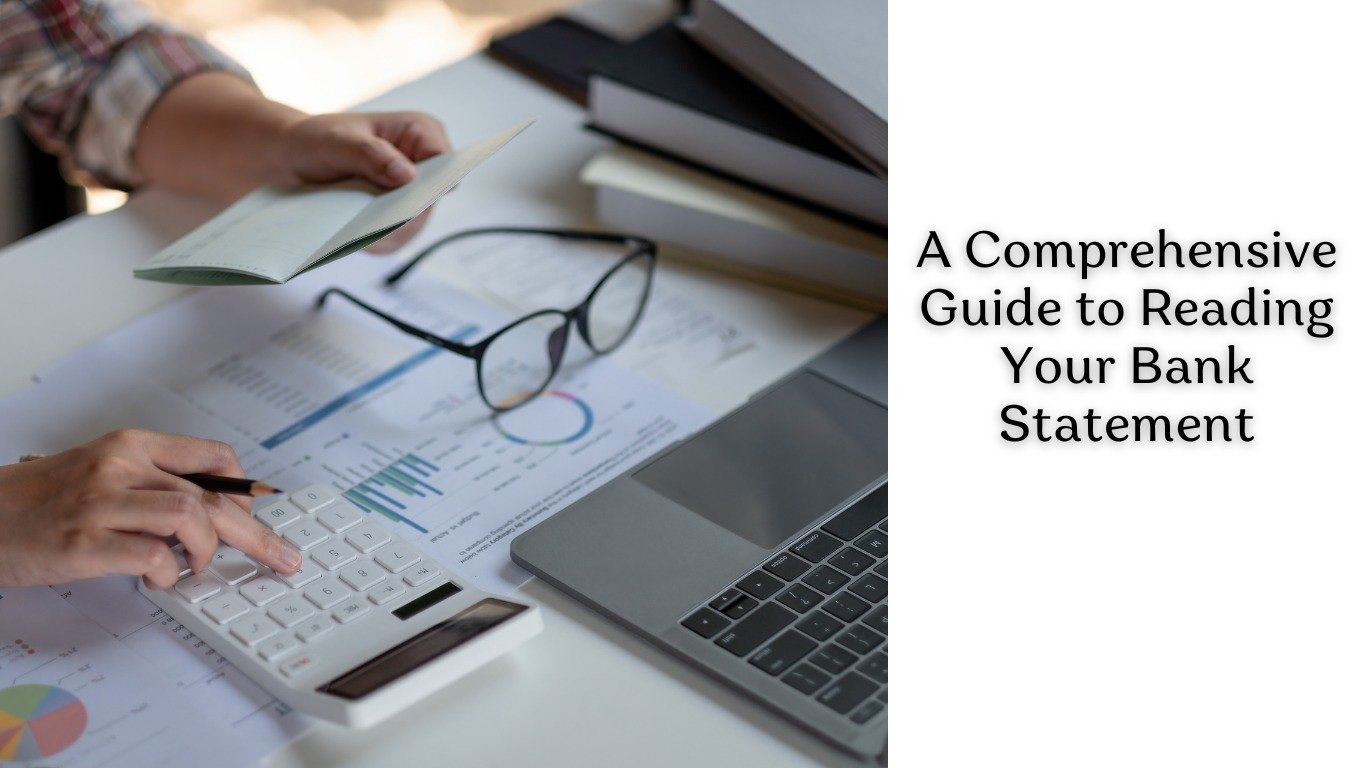Introduction:
A Comprehensive Guide to Reading Your Bank Statement Understanding your bank statement is crucial for maintaining control over your finances. Yet, many people find the document intimidating or confusing. In this blog, we’ll delve deep into the intricacies of deciphering your bank statement, empowering you to manage your finances with confidence.
Decoding Transaction Details: A Comprehensive Guide to Reading Your Bank Statement
A Comprehensive Guide to Reading Your Bank Statement The first step in mastering your bank statement is understanding the transaction details. Each transaction is accompanied by a code and description, which may initially seem cryptic. A Comprehensive Guide to Reading Your Bank Statement However, familiarizing yourself with common transaction codes and their meanings can demystify the process. For instance, “POS” typically denotes a point-of-sale transaction, while “ACH” refers to automated clearing house transfers.
Decoding Transaction Details: Understanding the Nuts and Bolts
A Comprehensive Guide to Reading Your Bank Statement Deciphering transaction details is crucial for businesses and individuals alike to maintain financial transparency and make informed decisions. A Comprehensive Guide to Reading Your Bank Statement Whether it’s parsing through bank statements, credit card bills, or cryptocurrency transactions, decoding the intricacies of each transaction can provide valuable insights into spending patterns, budgeting, and financial health.
Key Components of Transaction Details:
1. Date and Time: The timestamp of the transaction helps in chronological tracking and reconciliation of financial activities.
2. Transaction Amount: The numerical value of the transaction indicates the monetary value involved.
3. Transaction Type: Identifying whether the transaction is a purchase, withdrawal, deposit, transfer, or payment provides clarity on its purpose.
4. Merchant or Counterparty Information: Knowing the name of the merchant or the counterparty involved in the transaction helps in categorizing expenses and identifying potential fraud.
5. Transaction Description: Additional details provided alongside the transaction, such as product/service information or transaction codes, offer context for better comprehension.
6. Currency Conversion: For international transactions, understanding the exchange rate and any associated fees ensures accurate accounting.
7. Transaction Status: Whether the transaction is pending, completed, or reversed affects its impact on financial records.
8. Transaction ID or Reference Number: A unique identifier assigned to each transaction aids in tracking and resolving discrepancies.
9. Payment Method: Differentiating between cash, credit/debit card, bank transfer, or cryptocurrency payments enables analysis of preferred payment methods.
10. Location: Knowing the geographic location of the transaction assists in identifying spending habits and detecting unauthorized activities.
Decoding Tips:
1. Review Regularly: Regularly reviewing transaction details helps in detecting errors, unauthorized charges, or fraudulent activities promptly.
2. Categorize Transactions: Grouping transactions into categories such as groceries, utilities, entertainment, etc., facilitates budgeting and expense tracking.
3. Cross-reference Documentation: Comparing transaction details across different sources like receipts, invoices, and bank statements ensures accuracy.
4. Stay Vigilant: Be vigilant for any unfamiliar transactions or discrepancies, as they could indicate errors or fraudulent behavior.
5. Utilize Digital Tools: Leveraging budgeting apps, accounting software, or personal finance tools automates the decoding process and provides visual representations of financial data.
A Comprehensive Guide to Reading Your Bank Statement In conclusion, decoding transaction details is a fundamental aspect of financial management, enabling individuals and businesses to maintain control over their finances, identify spending patterns, and safeguard against fraud. A Comprehensive Guide to Reading Your Bank Statement By understanding the key components and implementing decoding tips, one can effectively navigate through the complexities of transactional data.

Identifying Deposits, Withdrawals, and Fees:
A Comprehensive Guide to Reading Your Bank Statement Next, it’s essential to distinguish between deposits, withdrawals, and fees on your bank statement. Deposits represent funds credited to your account, such as your paycheck or transfers from other accounts. A Comprehensive Guide to Reading Your Bank Statement Conversely, withdrawals denote money leaving your account, whether through ATM withdrawals, checks, or electronic payments. Additionally, keep an eye out for any fees charged by your bank, such as monthly maintenance fees or overdraft charges, which can impact your account balance.
Deciphering Account Balances:
A Comprehensive Guide to Reading Your Bank Statement Your bank statement provides a snapshot of your account balance over a specific period. Understanding how to interpret fluctuations in your balance is key to maintaining financial stability. A Comprehensive Guide to Reading Your Bank Statement By reconciling your statement with your own records, such as checkbook registers or digital budgeting tools, you can ensure accuracy and identify any discrepancies that require attention.
Spotting Unauthorized Transactions:
A Comprehensive Guide to Reading Your Bank Statement Vigilance is crucial when reviewing your bank statement for unauthorized or fraudulent transactions. Look out for any unfamiliar charges or suspicious activity, such as unexpected withdrawals or purchases you didn’t make. A Comprehensive Guide to Reading Your Bank Statement Promptly report any discrepancies to your bank to mitigate potential losses and protect your account security.
Leveraging Online Banking Tools:
Many banks offer online banking platforms with features designed to enhance your financial management. Take advantage of tools such as transaction categorization, spending analysis, and alerts for low balances or unusual activity. A Comprehensive Guide to Reading Your Bank Statement These resources can streamline the process of monitoring your finances and provide valuable insights into your spending habits.
Conclusion:
Reading your bank statement doesn’t have to be daunting. By understanding the transaction details, identifying deposits, withdrawals, and fees, deciphering account balances, spotting unauthorized transactions, and leveraging online banking tools, you can master the art of managing your finances effectively. Empower yourself with the knowledge gained from this guide, and take control of your financial future today.
FOR MORE INFORMATION: https://taxgyany.com/

